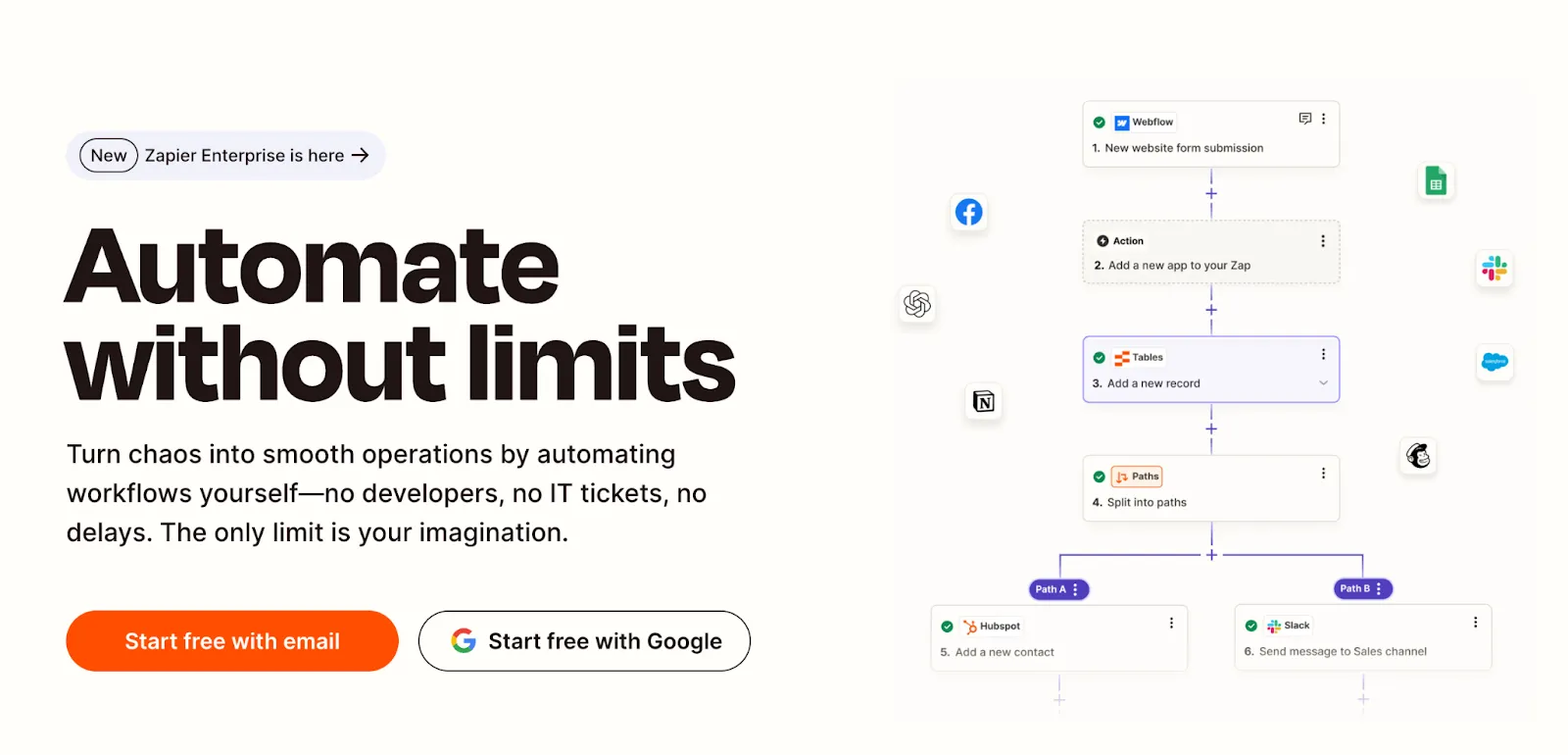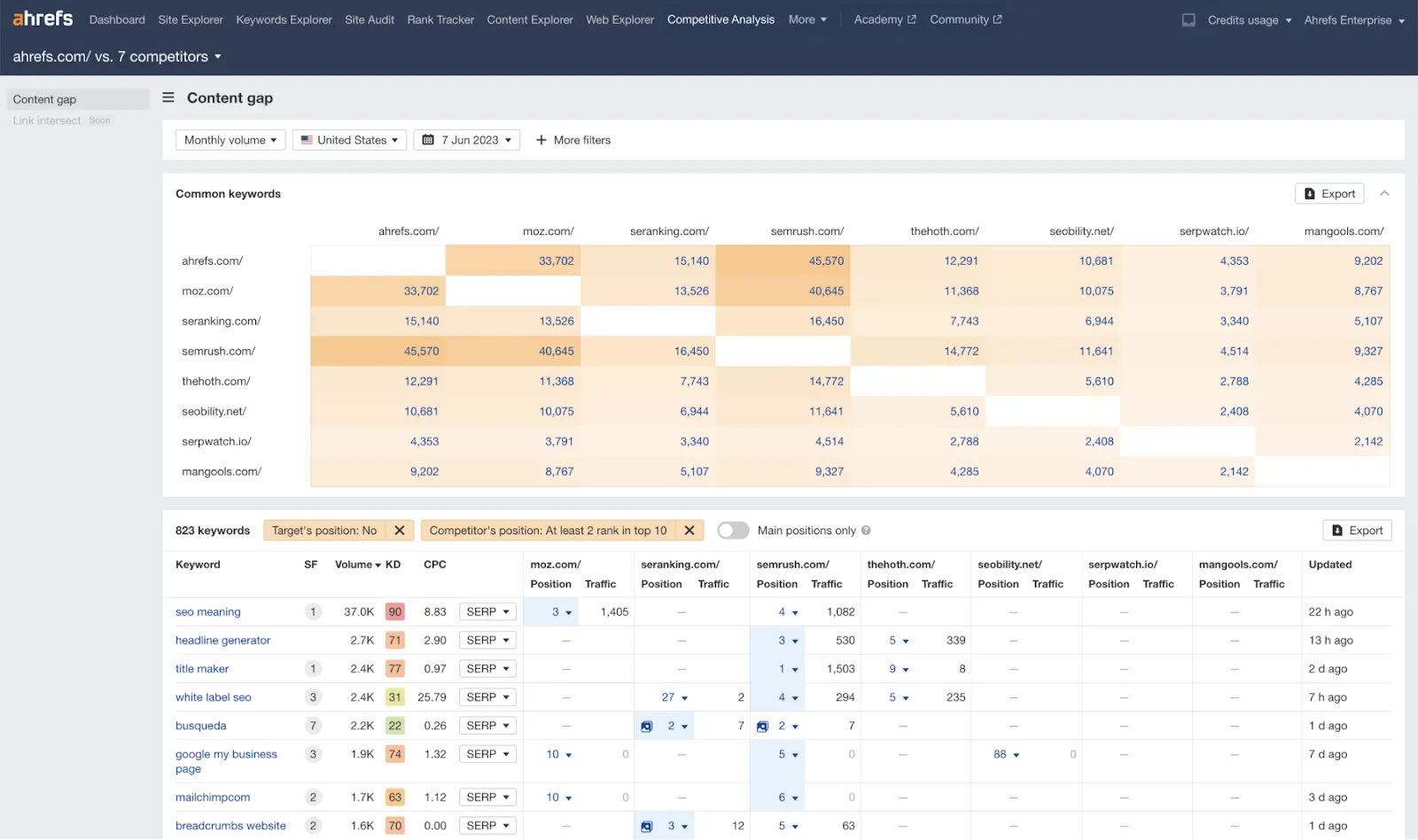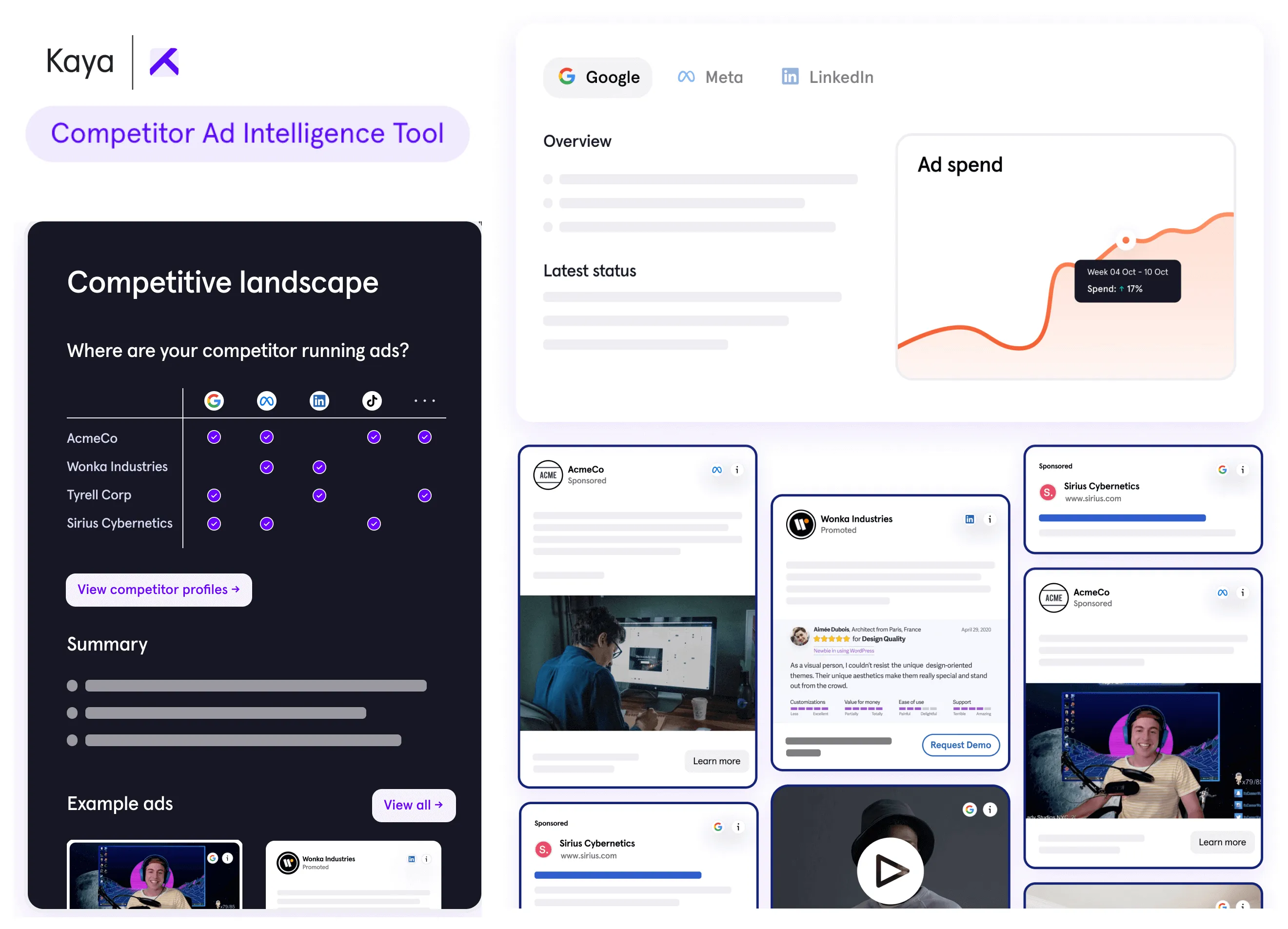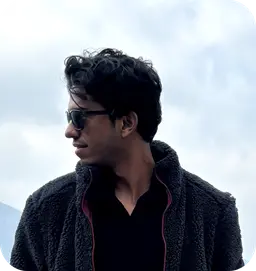What is a competitor landing page?
A competitor landing page is a standalone web page used by a rival company to drive specific marketing objectives, such as lead generation or product promotion. Analyzing these pages can offer insights into their marketing strategies and customer engagement tactics.
Here are some brief reasons why you should analyze competitor landing pages:
- Understand competitors' messaging and value propositions.
- Identify design elements and user experience strategies.
- Discover keyword targeting and SEO tactics.
- Benchmark conversion strategies and calls-to-action.
How to find competitors' landing pages?
You can discover competitors' landing pages by:
- Using tools like Similarweb, Ahrefs, or SEMrush to analyze traffic sources and top-performing pages.
- Exploring Google Ads Transparency Center and Meta Ad Library for active ad campaigns and associated landing pages.
- Conducting manual searches with relevant keywords to identify landing pages ranking organically.
Why you should analyze competitor’s landing pages?
Competitors are actually great teachers. Wondering why?
Suppose you’re building a website for your business. But where do you start? Competitor landing page analysis can be a great place to start for a plethora of reasons:
Understand their positioning and messaging
Analyzing how competitors frame their value propositions, CTAs, and headlines helps you identify what resonates with your shared audience and where your own messaging can stand out.
Identify winning design patterns and UX best practices
By observing how landing pages are structured (e.g., layout, visuals, navigation), you can borrow high-performing elements that improve time-on-page, reduce bounce rates, and boost conversion rate optimization (CRO).
Benchmark conversion tactics and offers
From gated content and demo CTAs to trust badges and urgency triggers, studying competitors' lead generation tactics gives you insight into what drives action, especially in high-competition categories.
Uncover keyword strategy and SEO themes
Examining on-page keywords, meta tags, and heading structures reveals what terms competitors are targeting. These insights can guide your own landing page SEO to attract more qualified traffic.
Spot content gaps and differentiation opportunities
Competitor analysis often reveals underserved personas, vague product positioning, or missing benefits. You can use this to craft unique angles that meet overlooked customer needs.
Understand how they segment and personalize traffic
Looking at UTM parameters or variations in ad-driven pages reveals how competitors tailor experiences based on audience type, funnel stage, or campaign. This gives you full-funnel ad strategy insights.
Evaluate load speed, mobile UX, and friction points
Page performance impacts both user behavior and ad platform scores (like Quality Score on Google Ads). Identifying UX bottlenecks on competitor pages helps you spot where you can gain cost efficiency.
Gauge their investment and creative testing pace
If competitors regularly A/B test headlines, refresh hero images, or vary CTAs, it signals an agile optimization process. You can benchmark their velocity against your own creative operations.
Align your paid ad funnel with market standards
Landing page analysis helps ensure your ad-to-page journey is competitive in load time, clarity, and CTA strength which improves ROAS (return on ad spend) and reduces cost per acquisition (CPA).
When it comes to landing pages–these are the building blocks of your brand and in most cases, a user’s introduction to your business. As the internet became increasingly convoluted, people’s attention spans have gotten shorter and the benchmark for grabbing that attention is pretty high. Your landing page needs to meet these expectations if you want to lower bounce rates and increase conversions. Your competitor’s landing page is the perfect place to start.
How to analyze the competitor's landing page
Keyword and SERP analysis
We’re assuming that if you have competitors, you’ve identified your target audience or group (TG) and perhaps even your Ideal Customer Profile (ICP).
- Begin by identifying keywords that your target audience would most likely use. Here’s a good thought process: consider that you are your TG and think from that perspective. What would you search for if you’re looking for a solution? Make a list of these keywords.
- Search that keyword and open the first 3-5 results that show up. These are the top competitors you would have to go up against.
- If you want to go deeper into competitors, you can explore multiple search engine results pages (SERPs) and analyze as many competition landing pages as you’d like. That’s your call.
What we talked about is the fundamental way to get started with keyword research (and it’s free). There are other ways to go about this such as leveraging tools like Semrush and Ahrefs – these are SEO/SEM tools that give deep insights into keywords, rankings, and competition.
Let’s take Ahrefs for example. Once you have a keyword list, you can add them to the Keyword Explorer tool that Ahrefs offers and get a single dashboard view of all the ranking web pages for these keywords. You can also get traffic breakdown, keyword volume, difficulty, demographic, and other important insights that can potentially help you make a decision about which keywords to target.

How we can do organic keyword analysis with Ahref
Copy and messaging
Your TG also greatly influences how you should communicate with them. How you would talk to C-suite executives is not how you would talk to fashion designers–each TG responds to a different tone of communication and how your competitors have approached messaging on their landing pages gives you a lot to work with.
Once you’ve figured out which competitors are ranking for your targeted keywords, you need to understand why they are ranking above the other competitors–what sets them apart? Here are a few things to keep in mind when you’re analyzing your competitors’ landing page:
| What to keep in mind | |
| Headline and description | Generally, you should get a quick overview of what your competitor is offering from their headline and description. Pay close attention to how they’ve formulated their service in the first scroll itself. |
| Product features |
Headlines are usually followed by brief explanations of the product or service. Observations below will fuel how you approach messaging for your website.
|
| CTAs and conversion actions | These are how users will connect with you so they have to compelling enough.
|
Let’s take Zapier’s homepage as an example -

Zapier’s landing page clearly communicates value proposition
Zapier is a cross-platform automation no-code tool that lets you connect multiple tools and automate your everyday tasks with a simple drag-and-drop interface to create workflows.
This is quite clearly and concisely explained in their headline and description. You don’t even need to read it twice. Zapier’s TG is everyday professionals and entrepreneurs who want to save time. Hence, their messaging also extends this narrative and positions themselves as a brand that values time through simple messaging.
Here’s another example of a brand that will not work for you as a startup. Gainsight’s headline is an introduction to their new AI showcase followed by a description that is too vague or broad. This isn’t wrong.
In fact, Gainsight was one of the earliest customer success platforms and they’ve come a long way. As an established brand, they have the liberty to use words that might not define a niche problem and still have great results.

Gainsight’s landing page might work for them but not for a startup
However, something like this doesn't work for a startup because people don’t know you yet. There are way too many options on the internet and people’s diminishing attention spans will not be patient enough to understand words (or product descriptions) that they’re not familiar with.
Become a customer of your competitor
In order to see the bigger picture, you will have to go beyond just your competitor’s landing page. Dig deeper into your competitor’s services and their content for a holistic view and blueprint. Here are some things to look for and consider in your competitor analysis process:
- Their content and marketing collaterals: Read their blogs and ebooks to understand what topics they address. Sign up for their newsletter to stay up-to-date with what they communicate to their customers. Read their case studies to see how they’re helping their customers.
- Use their product: A lot of tools offer free trials or demos to give a trailer of how their product works. This can help you connect the dots between how their product works and how have they communicated that on their landing page.
- UX and navigation: The user experience is detrimental to higher conversions. As we mentioned earlier, users have very low tolerance nowadays, and complicating navigation, onboarding, or conversions is a surefire way to see an increase in drop-offs. How have your competitors done it? How seamless did it seem to you? Can you make it better?
For example, Slack offers one of the most seamless experiences in SaaS today. A streamlined onboarding flow helps users focus on one thing at a time and go through the entire process without losing interest. This also works extremely well for products that might be sophisticated or overwhelming to understand at first.

Slack’s onboarding is elaborate yet seamless, something to learn from
To learn more about how Slack perfected onboarding, read this article.
Analyze their data
There are more data points you can gather about specific competitors after you’ve identified them with tools like Ahrefs and Semrush. This gives you more in-depth knowledge about your competitor's organic traffic, backlinks, domain strength, top-performing landing pages, and keywords (that we discussed already).
In fact, Ahrefs has a Competitive Analysis module built that lets you visualize your website against your competitors and understand where you’re lagging behind. Of course, this only works if you’ve built your website and are now are in the process of optimizing it.

How to conduct competitive analysis on Ahrefs
Some methods and tips to help you
| Main step (in order) | Tips |
|
See how many of their pages are on SERPs and which keywords each of them ranks for. |
|
|
Explore where your competitor’s traffic is coming from and replicate that for your website. |
|
| Identify opportunities by seeing where your competitors are not performing well and dive deeper into those areas specifically–this is where you can create an edge. |
|
|
Analyze internal linking and technical SEO such as page load time, sitemaps, scripts, etc. These are factors that you’ll have to include in your website too. |
|
Competitor ad analysis
Ad performance is also interlinked with your landing pages and if you’ve decided to go ahead with the paid media route, analyzing your competitor’s ads and their landing pages will help you understand how to write better copies.
How can competitor ad analysis help with your landing pages?
- The keywords you’re targeting on your landing page should be similar or closely related to what the messaging is like in your ad copies. If your ad talks about “AI chatbot for customers” but your landing page is more about “AI agents for support teams” then people will leave in less than a couple of seconds.
- You can observe this in your own ads through metrics like ad relevancy and quality score. These will help you know if you’re on the right track or if you need to recenter your focus.
- What are your competitors talking about? The problems that get the most attention are what you too should focus on. Check out your competitors’ ads and creatives and see how they link to their landing page. Understanding this will help you identify industry trends, pain points, and become more aware of what to talk about on your landing pages.
How can you go about it? A few simple steps to get started:
- You can start by searching for the keywords you’re targeting. Read the ads that show up in the SERPs and try to interpret what you understand from them.
- Open these links and read through their landing page to compare what they said in the ad vs what they said on the page.
- Engage with them on social media so you might see their ads when you scroll. In case you do, observe what creatives have they used, messaging, and the linked landing page.
Competitor ad analysis has more connotations and there are quite a few factors that even searching won’t help with. This is where tools can help identify competitor ads and give you actionable insights not just to improve ads but to enhance landing pages for better conversions.

Kaya's Competitor Ad Intelligence Tool shows you where your competitors are running ads; how much they're spending; which ad formats are working for them.
Lucky for you, we’ve made ad analysis easier with our Competitor Ad Intelligence tool that not only lets you track competitor ads but also draws actionable insights to help you win.
- A complete view of your competitors’ ads and which channels are they active on.
- Reveal their ad spend and get a pulse on their budget for your own ad campaigns.
- View all their ads–creatives, copies, messaging–all in one place.
- Actionable insights and recommendations on which channels to focus on and what angles to look at.
Ultimate competitor landing page analysis template
| Category | Criteria | What to Record |
|---|---|---|
| General Info | Page URL | Landing page URL, presence of UTM parameters or dynamic parameters |
| Page type | Type of landing page (e.g., demo, pricing, feature, comparison) | |
| Funnel stage | TOFU, MOFU, or BOFU based on messaging and CTAs | |
| Target audience | Target segment or ICP based on tone and language | |
| Messaging & Content | Headline & subheadline | Clarity and specificity of the headline, does it explain the value? |
| Tone & positioning | Brand tone (formal, casual, technical), and positioning strategy | |
| Feature explanation | What are the key features highlighted and how clearly? | |
| Pain points addressed | Which pain points are mentioned or implied? | |
| Use of keywords | Use of keywords in headings, subheaders, and body copy | |
| Conversion & CTAs | Primary CTA | Main CTA text and its intent (e.g., “Start Free Trial”) |
| CTA placement | Placement of CTAs across the page | |
| CTA messaging | Language and appeal of the CTA (actionable, benefit-driven) | |
| Supporting actions | Presence of secondary CTAs (e.g., whitepapers, newsletters) | |
| Visuals & Layout | Hero section | Main visual or explainer used above the fold |
| Layout hierarchy | Content flow: Does it follow a logical problem-solution narrative? | |
| Visual proof | Use of screenshots, illustrations, demo videos | |
| Visual consistency | Visual consistency with brand identity and color palette | |
| Trust & Social Proof | Testimonials | Presence of real customer quotes and attribution |
| Logos | Presence of recognizable logos (clients, partners) | |
| Case studies or stats | Proof in numbers or stories to support claims | |
| Reviews or badges | G2/Capterra badges, review site integrations, or press mentions | |
| UX & Performance | Load speed | PageSpeed score, mobile speed metrics |
| Mobile responsiveness | Responsive layout and mobile usability | |
| Navigation | Is it a single CTA page or does it include nav elements? | |
| Accessibility | Are fonts, spacing, colors designed for readability? | |
| Paid Ads Funnel | Ad > LP cohesion | Does the LP match ad copy and promise? |
| Relevance indicators | Would Google/Meta rate this high for relevance and experience? | |
| Audience segmentation | Is the page tailored to a segment or use case? | |
| A/B testing signs | Evidence of split testing via URLs, scripts, or visual clues | |
| SEO & Visibility | SERP performance | Does the page rank on page 1 for relevant keywords? |
| Title tag / meta desc | Well-structured title and meta description with keywords? | |
| Backlinks | Do SEO tools show backlinks pointing to this page? | |
| Internal linking | Is the page internally linked from key site areas? | |
| Overall Evaluation | Differentiators | What stands out positively from this LP? |
| Weaknesses / gaps | What’s missing or ineffective on the page? | |
| Learnings to apply | Ideas, formats, or elements you could test or replicate |
FAQ
What is a competitor comparison landing page?
What are landing pages for competitions?
What is competitor analysis landing page?
Will you help me with my landing pages?
How can Kaya help?
Competitor landing page analysis is unequivocally one of the more highly recommended strategies while building a website. From identifying keywords and TG to nuances like messaging and CTA, everything ties together more effectively and with better research and analysis. We at Kaya specialize in hand-crafting website and landing page strategies for you so you don’t waste time making mistakes that can be avoided.
Hona, a new player in the healthtech space, needed to quickly establish trust with potential users and differentiate itself from well-established competitors. They wanted to clearly communicate Hona's value and unique offerings while keeping visitors engaged on their landing page.
Kaya helped startups like Hona define the website’s messaging, redesign the landing page, and offer ad optimization which led to a 62% increase in conversion rate and a 64% decrease in cost per lead (CPL). We also helped increase lead volume in an effort to improve acquisition.


